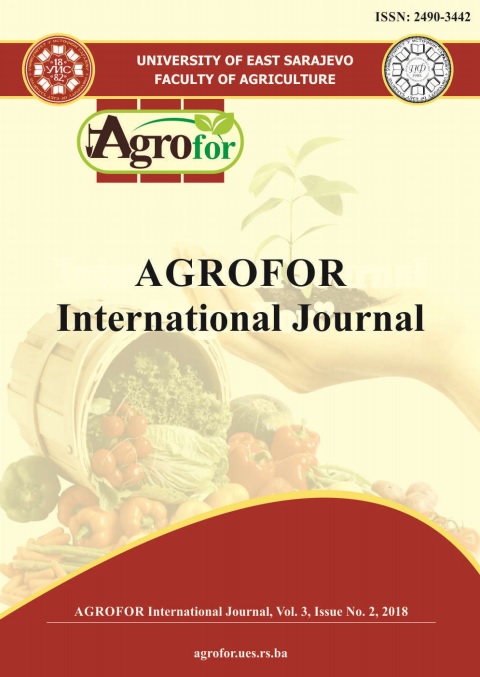STRONTIUM CONTENT IN SANDY SOILS IN AGRICULTURE FIELDS (CASE STUDY: MOUNDOU, CHAD)
DOI:
https://doi.org/10.7251/AGRENG1802121KAbstract
During evaluation of physical and chemical properties of sandy soils and their
fertility in Southern part of Republic of Chad it has been revealed that some soils
have very high content of strontium. Its content varies from 10 to 270 mg/kg of
soil depending on type of soil, depth of soil layers, clay and organic content.
Strontium content negatively correlates with total content of calcium and
phosphorus in layers of soil. Low CEC (CEC - Cation-exchange capacity) of soil
may be a reason of possible translocation of strontium from higher to lower layers
of soils. Strontium content in soils do not relates with level of radioactivity of soil
measured. The highest content of strontium has been found in soils developed on
some eolian and colluvio-alluvium deposits. Some researchers hypothesize that
some endemic and chronic diseases such as Kashin-Beck disease, `Dysostosis
enchondralis endemic`, endemic hoiter, osteoarthritis might be caused by high
content of strontium in water and plant foods contaminated with it. Absence of
consensus on etiological factors of these diseases confirms that it is worth
considering necessity of further studies of different affects of high content of
strontium in water and foods on human health directly or indirectly through
causing misbalance in mineral nutrition.

